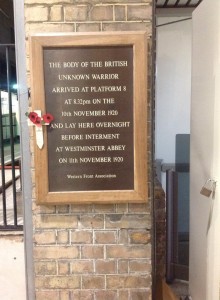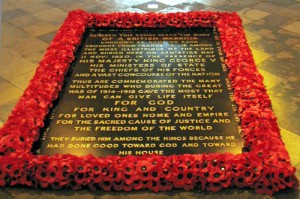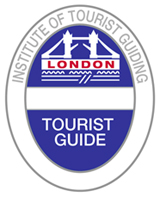The Unknown Warrior
I often take visitors to Westminster Abbey, and one of the most poignant moments of any tour is when we stop at the Tomb of the Unknown Warrior. It’s visited by thousands of tourists every year, but who was he and how did his grave come to be the most important burial in the Abbey despite all the monarchs buried there?
His story starts with the Reverend David Railton, a padre serving on the Western Front in World War One. In 1916 he saw a simple wooden cross in a garden marked ‘An Unknown British Soldier’. Moved by this, David Railton thought about what he could do to ‘ease the pain of father, mother, brother, sister, sweetheart, wife and friend’ and suggested the idea for an Unknown Warrior grave to represent all the dead. His letter to Sir Douglas Haig went unanswered.
The idea continued to nag at him and in 1920, he wrote to the Dean of Westminster, as he considered the Abbey to be the only suitable place for the burial. The idea floundered for some weeks, until the Dean managed to get the Prime Minister on his side, and then ultimately King George V. On 18th October 1920, with just three weeks to go, it was decided that the burial should take place on Armistice Day.
On 7th November, Brigadier General L J Wyatt chose the Unknown Warrior from four bodies that had been exhumed from the battlefields at the Aisne, the Somme, Arras and Ypres. Transported by ambulance to Boulogne, the road outside the town was lined with French and British troops. After resting overnight in a chapel, the remains of the Unknown Warrior were placed in a special coffin sent over to receive it and came back to Britain on HMS Verdun. Loaded carefully onto a train, it made its way from Dover to Victoria Station. Thousands of people turned out along the route to watch the train pass and pay their respects, and the roof of the carriage containing the coffin was painted white so people on bridges along the route knew which carriage he lay in.
At 8.32pm on 10th November 1920, the body of the Unknown Warrior, sealed in a coffin, was brought to Platform 8 at Victoria Station.
Following an overnight vigil at the station by the Kings Company Grenadier Guards, the coffin was placed on a gun carriage to be taken to Westminster Abbey. As the funeral cortege set off, a field marshal’s salute was fired in Hyde Park. The procession was accompanied by the nation’s highest ranking officers and ex-servicemen. Stopping in Whitehall, King George V unveiled the permanent stone Cenotaph at 11.00am, laid a wreath and then joined the cortege with members of the Royal Family, the Prime Minister and Government ministers.
At Westminster Abbey, the nave was lined with 100 Victoria Cross recipients and in the congregation were 1,000 widows and mothers as guests of honour, including 100 women who had each lost their husband and all of their sons.
The Unknown Warrior was laid to rest in the western end of the nave in a coffin made of English oak, from a tree at Hampton Court Palace. On top lay a Crusader’s sword from the Tower of London. The coffin was placed in a grave filled with soil brought from Ypres and France, covered with a slab of Belgian marble with an inscription made from shell cases.
It was to become a focal point for all the unknown dead, giving every relative the hope that this was their son, brother, husband or father. In 1923, when Lady Elizabeth Bowes-Lyon married the Duke of York (the future King George VI), she spontaneously stopped when entering Abbey and laid her bouquet on the Tomb of Unknown Warrior in memory of two of her brothers who had lost their lives in the Great War. An act followed by royal brides ever since, although their bouquets are usually laid on the tomb when leaving the Abbey or the next day.
 Tonight, as we enter our weekend of Remembrance, the arrival of the Unknown Warrior at Victoria Station will be commemorated by The Western Front Association, in a little known ceremony that takes place every year. At 8.00pm on 10th November at Platform 8 a parade assembles, the last post is played and a one minute silence is observed. Then wreaths are laid at the memorial plaque by members of the armed forces, the Royal British Legion, the Metropolitan Police and London Transport among others.
Tonight, as we enter our weekend of Remembrance, the arrival of the Unknown Warrior at Victoria Station will be commemorated by The Western Front Association, in a little known ceremony that takes place every year. At 8.00pm on 10th November at Platform 8 a parade assembles, the last post is played and a one minute silence is observed. Then wreaths are laid at the memorial plaque by members of the armed forces, the Royal British Legion, the Metropolitan Police and London Transport among others.
It is a small, but significant and incredibly moving tribute, in honour of that Unknown Warrior who has no name but will always be remembered.



Leave a Reply
You must be logged in to post a comment.